Digital Detox Plans That Actually Work
Let’s be honest—most of us are a little too glued to our screens. Whether it’s endless social media scrolling, binge-watching shows, or just the constant ping of notifications, our digital lives often take over more than we’d like to admit. While technology has made life incredibly convenient, it’s also brought along stress, anxiety, and a serious case of digital fatigue.
That’s where digital detox plans come in. Think of them as gentle resets—ways to step back, breathe, and reconnect with the world beyond the screen. But not all detox strategies are created equal. Some are too extreme, others feel impractical, and many just don’t stick. That’s why we’ve rounded up 10 digital detox plans that actually work—strategies that are realistic, effective, and most importantly, sustainable.
Whether you're looking for a complete break or just want to build healthier habits, there's something here for everyone. So if your mind needs a little more calm and your screen time needs a little less chaos, these detox ideas might just be the refresh you’ve been looking for.
1. The 24-Hour Unplug Challenge
Sometimes, the best way to hit reset is to go all in—just for a day. The 24-hour unplug challenge is a digital detox plan where you commit to staying completely off your devices for an entire day. No scrolling, no emails, no binge-watching. It may sound extreme, but it’s one of the quickest ways to recognize how much screen time has crept into your life.
To make this challenge more manageable, pick a day that works best for you—usually a weekend is ideal. Plan your day with offline activities like reading, nature walks, journaling, or spending quality time with family or friends. Having a "tech-free" itinerary helps curb the temptation to check your phone out of boredom.
After just 24 hours, many people report feeling clearer, more present, and less anxious. It’s like giving your brain a mini-vacation. The beauty of this detox is that it’s short, simple, and repeatable whenever you need a quick reset.
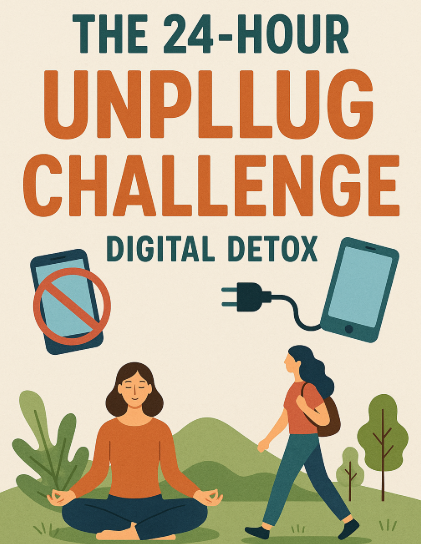
2. The No-Screen-After-8PM Rule
One of the biggest culprits of poor sleep and overstimulation is nighttime screen usage. This detox plan involves cutting off all digital device use after 8 PM every night. It may sound tough, especially if your evenings are usually filled with social media or Netflix, but the benefits are surprisingly immediate.
By setting a firm boundary on screen time at night, your body gets a chance to wind down naturally. Blue light from screens tricks your brain into thinking it’s still daytime, which disrupts melatonin production and messes with your sleep cycle. Swapping out screens for calming routines like stretching, journaling, or listening to soft music can work wonders.
Over time, you’ll start noticing improvements in your sleep quality, mental clarity, and even your mood the next day. It’s a small change that brings big rewards—making this one of the most sustainable digital detox strategies out there.

3. Weekend Digital Sabbatical
Think of this as a digital version of a weekend getaway. A weekend digital sabbatical means intentionally going offline every weekend—or at least one full day each week. It's a great way to establish a healthy work-life balance, especially if your weekdays are screen-heavy.
Use this time to reconnect with the physical world. Whether it's going on a road trip, cooking something new, or organizing your space, the goal is to engage your senses and stay in the moment. Let your loved ones know about your detox plan so they’re not worried if you're not responding.
The first couple of weekends might feel odd, even boring. But as the habit builds, you'll start to look forward to these "off" days as a sanctuary from digital noise. It becomes a rhythm your mind and body truly appreciate.
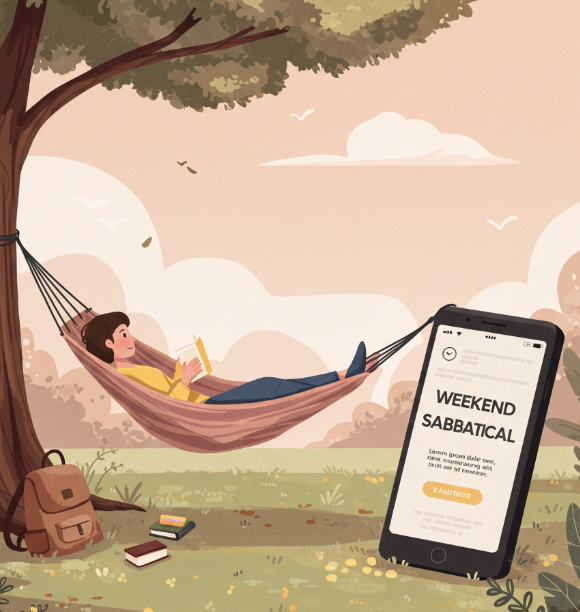
4. The App Elimination Strategy
Instead of going completely offline, this plan focuses on removing specific apps that drain your time or cause stress. Social media apps, news aggregators, and addictive games are common culprits. The idea is to identify and uninstall the apps that don’t serve your mental well-being.
Start by tracking your screen time for a few days to find out where most of your time goes. Then, one by one, delete or disable the apps that aren’t essential. You can even replace them with healthier options—like meditation or journaling apps that promote mindfulness.
What’s great about this plan is its flexibility. It’s not about total disconnection but conscious curation of your digital environment. The less cluttered your phone, the less anxious your mind feels—and that alone makes this strategy worth trying.
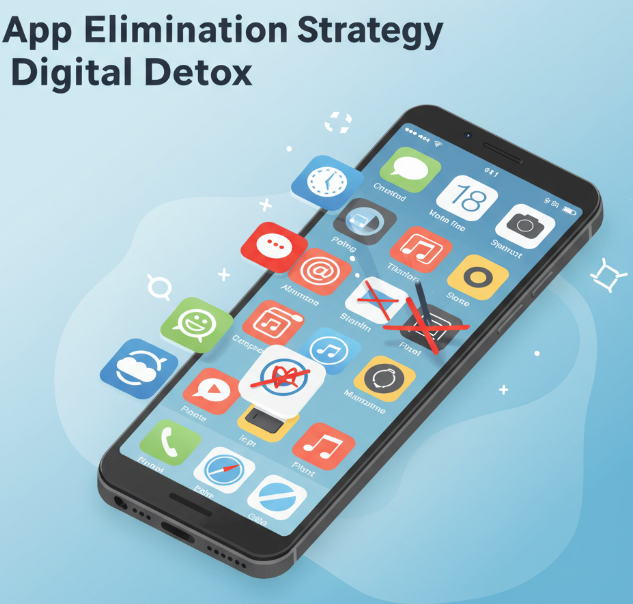
5. Morning Mindfulness First
We often wake up and immediately dive into our phones—checking notifications, emails, and news before we’ve even left bed. This detox plan aims to change that by creating a screen-free morning routine. The first hour after waking up is dedicated to mindful, offline activities.
Try starting your day with a few minutes of deep breathing, stretching, or sipping your coffee without distractions. Journaling or reading a physical book can also help ground your thoughts. Avoiding screens in the morning sets a calmer tone for the rest of your day.
After a few weeks, you’ll likely notice a significant drop in morning anxiety and an increase in overall focus. This detox habit can completely transform the way your day unfolds—proving that the first hour is often the most powerful.
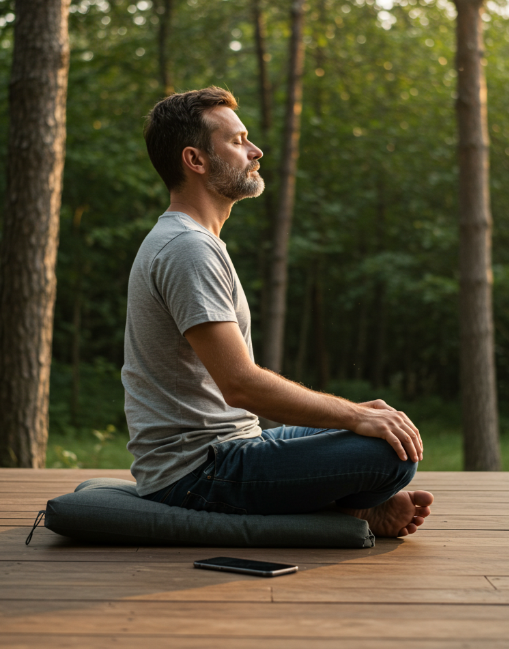
6. The “Analog Hobby” Challenge
When you remove screens from your routine, you need something equally engaging to fill that time. That’s where the analog hobby challenge comes in. This plan encourages you to pick up a non-digital hobby—like painting, gardening, knitting, or even playing a musical instrument.
The idea is to replace screen time with something that brings joy and mental stimulation without the side effects of overstimulation. Hobbies help shift your focus to the present moment and give you a sense of accomplishment that doom-scrolling never will.
Plus, analog hobbies offer a creative outlet and can even become a form of therapy. Over time, these hobbies become go-to escapes from screens—and that shift can make your digital detox feel less like a restriction and more like freedom.
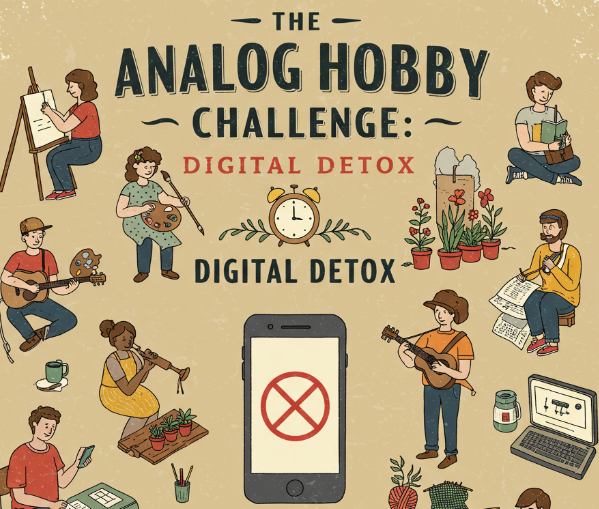
7. Digital-Free Dining
This one is simple but powerful: no phones at the table. Whether you’re eating alone or with others, make mealtime a screen-free ritual. Not only does this improve digestion (yes, really), but it also encourages deeper conversations and mindful eating.
Start by creating a phone basket or drawer where all devices go before meals. Replace scrolling with eye contact and conversation, or simply enjoy the silence if you're eating solo. This small shift can change the way you relate to food and those around you.
In a world where we’re constantly multitasking, giving your full attention to a meal is a rare act of presence. It’s one of the easiest detox strategies to implement and quickly becomes a habit that adds richness to everyday life.

8. Nature Reconnection Plan
Nothing pulls you out of the digital world like spending time in nature. This plan involves setting regular time—weekly or daily if possible—to step outside, go for a walk, or explore a park without any screens in sight.
Leave your phone behind (or put it in airplane mode) and simply observe your surroundings. Listen to birds, feel the breeze, touch the bark of a tree. These may sound poetic, but they’re also scientifically proven to lower cortisol and boost mood.
Nature has a way of reminding us of the bigger picture. It offers grounding, peace, and perspective—something no app can deliver. Reconnecting with the natural world can make digital habits feel less appealing and more manageable over time.
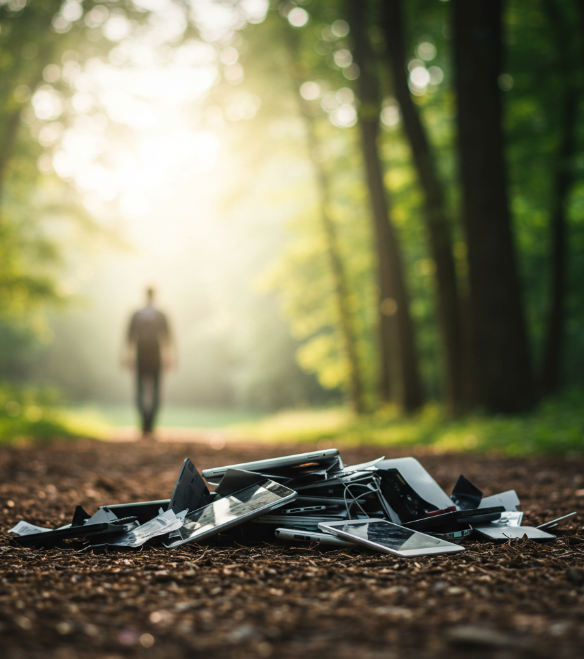
9. The 5:2 Digital Diet
Inspired by the intermittent fasting trend, the 5:2 digital diet means spending five days a week with regular tech use, and two days with strict digital boundaries. You can choose how strict you want those two days to be—ranging from social media-free to completely unplugged.
This plan is ideal for people who want balance without going cold turkey. It gives you the freedom to stay connected when needed but also gives your mind the regular breaks it deserves. The trick is consistency—making sure those two days are truly dedicated to detoxing.
Many people find that this rhythm gives them a renewed sense of control over their tech usage. It’s like creating a sustainable balance between productivity and peace, which makes it one of the more realistic and long-term digital detox plans.
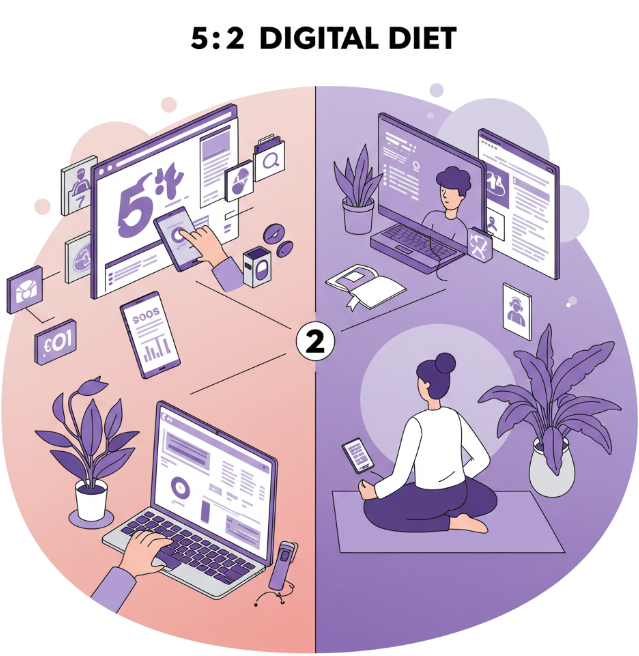
10. The Digital Declutter Month
This is the Marie Kondo method of the digital world. The idea is to spend an entire month reassessing your digital habits, apps, subscriptions, and even contacts. It’s not just about using less tech—it’s about using it better.
Week by week, you tackle different areas: clean your email inbox, organize files, unsubscribe from newsletters, limit notifications, and review who you follow online. You’re basically spring-cleaning your digital life to make it leaner and more intentional.
By the end of the month, your digital space will feel lighter and more aligned with your goals. It’s a powerful reset that shifts your relationship with technology from one of distraction to one of purpose. And that’s what a real digital detox is all about.
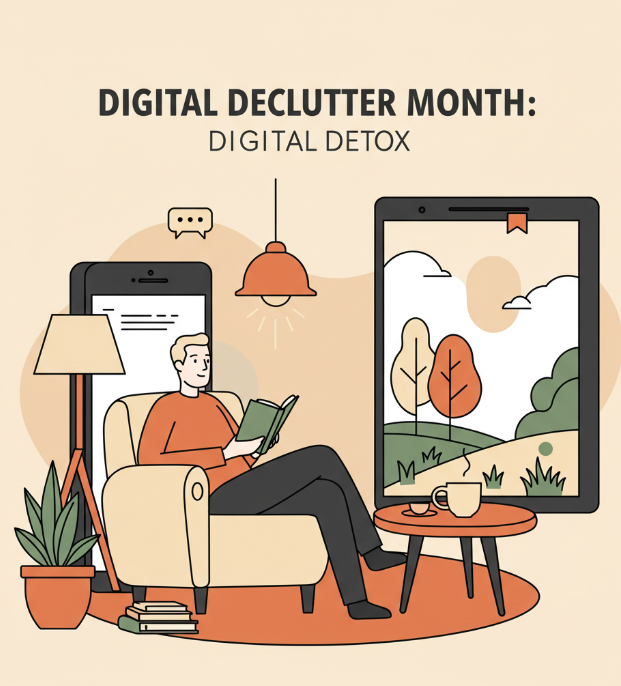
Digital detoxing isn’t about ditching technology forever—it’s about creating space for what really matters. Whether it’s better sleep, deeper connections, or simply more peace of mind, these small changes can lead to big transformations. And the best part? You don’t have to go off the grid to feel the benefits.
By experimenting with different detox plans, you’ll start to discover which habits bring you balance and which ones quietly drain your energy. The key is to be intentional, not perfect. Progress over perfection always wins when it comes to long-term lifestyle shifts.
So go ahead—try a plan or two. Unplug a little. Reconnect a lot. And remember, your digital life should enhance your real life—not replace it.